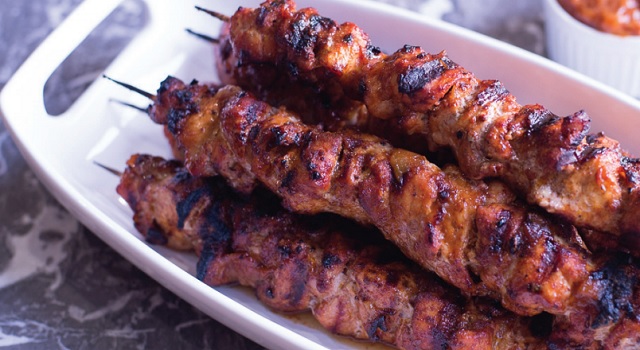
Why do you crave fatty foods after drinking even when you know it’s a bad combination?
Kampala, Uganda | AGENCIES | You know the drill: You’ve been good all week, watching what you eat. So you accept that happy hour invitation from your co-workers to have a few drinks on Friday night without any guilt.
However, as the night progresses, it hits you: that ravenous hunger that only comes out after you have had a few adult beverages the drunk munchies, aka the “drunchies.” As Urban Dictionary defines them, the drunk munchies are “The craving to consume mass quantities of absorbents after a session of moderate to heavy drinking.
The effects are twofold: slowing down the rate of alcohol being introduced into the bloodstream, and depleting the amount of any easily available food around. When a person has the “drunchies,” the foods they eat are often high in fat, salt, and carbohydrates.
Fried foods like French fries, hot fried chicken, and roasted or grilled pork or goat ribs are typically at the top of the list.
Why?
Here’s the short version of the explanation: Alcohol makes you more pliable to the moment and your brain thinks you are starving.
In those moments, you want what tastes good — fats, salt, and carbs. You are not thinking about all the work you have been putting in to conquer that half-marathon coming up in a month because alcohol dampens your larger, outer, thinking-person brain and lets your smaller, inner, drunk-brain do the decision-making.
What causes the ‘drunchies’?
A study published last year in Nature sought to help explain why after drinking alcohol a calorie-dense substance the brain still thinks it needs food.
Examining the brains of mice, they found that Agouti-related peptide (AgRP) neurons special neurons in the front of the brain that deal with hunger and other functions are activated during intoxication. In other words, your brain, while under the influence, thinks it’s starving.
Dr. Chirag Shah, a board-certified emergency medicine physician and medical reviewer for PollMed, says the study might help explain why humans get hungry after drinking alcohol. He advises that drinkers do a little preparty planning, namely by not keeping “temptation foods” around.
“It’s much harder to eat something that is not easily accessible,” Shah told Healthline. “Keep healthy snacks around as a substitute. If you do end up eating something, at least give yourself the option of eating something that might not be as unhealthy.”
But, fast food and other late-night meals are easily available 24 hours a day. Also, now that third-party delivery services can make your favorite fried and fatty foods show up at your doorstep with a tap of an app, avoiding bad food takes more than willpower.
So what, exactly, are drunk people most often in the mood for? Recently, the folks at Mattress Advisor who regularly ponder why people aren’t asleep yet surveyed more than 1,000 people on their after-hours snacking tendencies in a study called Late Night Bites.
It wasn’t unusual for people with the “drunchies” to find fast food after midnight. That is bad for your waistline. However, registered dietitian Suzanne Dixon knows when people have been drinking, the “drunchies” are not going to make them feel like they want a sukuma wiki salad.
“People go for the worst possible foods (for health) when drinking,” she told Healthline. “Drinking can make you overeat junk food, which is likely to make you gain weight over time. But the problem is even worse than that.”
Dixon says macronutrients, the things in the diet that provide calories, are important to consider. For instance, carbs and proteins have about four calories per gram and fat has nine. Alcohol has about seven calories per gram.
“Alcohol is actually closer to fat in terms of the calories it provides,” she said. So, before you decide to order a second platter of barbequed goat ribs or a bowl of cow hoof (molokony) soup next time, either during or after a night of drinking, Dixon encourages you to do a little math.
Let’s say you have three or four drinks (that four beer bottles), which can add up to a lot of calories, especially if those drinks end with “…and Coke.”
“Now, add in the overeating junk food after those drinks and you get the picture,” Dixon said. “It’s pretty tough to avoid weight gain if every weekend is filled with 500 calories of drinks and 1,000 calories of junk food.”
How to avoid the ‘drunchies’
While taking Dr. Shah’s advice about keeping healthier snacks around is a good first step, Dixon says if you truly don’t want to blow a week of good choices with margaritas (tequila, orange liqueur and lime juice cocktails) and a pizza craving box, you have to keep your brain trained on the long term because the “drunchies” will make you go for the things you typically avoid with intention.
“For many people, when they are not drinking, they are focused on their longer-term goals. This could include maintaining a healthy body weight or losing weight, getting to the gym regularly, and eating healthfully over all,” Dixon said.
“These are all goals generally incompatible with eating burgers, fries, pizza, chips, and other high-calorie foods on a daily basis.” The simple killjoy answer in avoiding the “drunchies” is avoiding the “drun” part, or, in other words, do not drink alcohol to the point of getting drunk.
Dixon says this will avoid the brain chemistry changes that send the “I’m starving” signal that may lead you to overeat. “Remember, trying to not give in to the ‘drunchies’ is like denying a biological imperative to eat when your brain is telling you you’re starving.
Perception is everything,” she said. “It doesn’t matter that you aren’t starving. Your brain is telling you otherwise and that’s a very powerful signal to deny.” The same goes when your brain thinks it’s not getting enough non-alcoholic beverages. In order to control what you might eat later, Dixon highly recommends staying hydrated by alternating a full glass of water with every drink.
Another is to set your intention on what you plan to do that night and the next morning. “If you go out to get blitzed, it’s unlikely you’re going to avoid the ‘drunchies’,” Dixon said.
“If you go out thinking, ‘I’m going to have a great time with friends, have a couple of drinks, and make it to the gym tomorrow morning,’ you are less likely to succumb to the peer pressure to have much more alcohol than you’d like.”
That, overall, is a better long-term plan than what you’ll probably come up with while waiting in line at a drive-thru at two in the morning.
****
Source: Slightly edited article from the internet
 The Independent Uganda: You get the Truth we Pay the Price
The Independent Uganda: You get the Truth we Pay the Price


